Search Images
Browse Content (p. 1512)
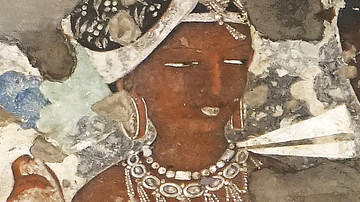
Image
Mural, Ajanta Caves
Some of the most evocative murals were created on the walls of the Ajanta Caves (Maharashtra, India) between 2nd century BCE and 6th century CE. The expressive face, playfulness of light and shade and presence of lustrous jewellery make this...
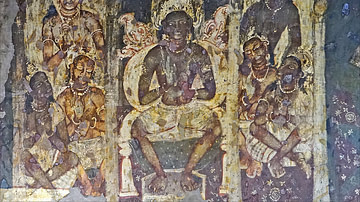
Image
Buddha with His Disciples
A mural in Ajanta showcasing the highly evolved skills of early Indian artists (between 2nd century BCE and 6th century CE). Buddha here is shown in pralamba padasana mudra.
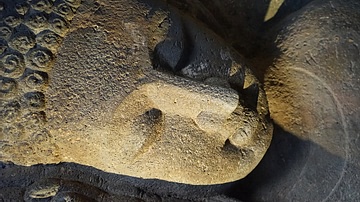
Image
Resting Buddha in Ajanta
Some of the finest works of art were created in Ajanta Caves (Maharashtra, India) between 2nd century BCE and 6th century CE. Mahaparinirvana (demise) of Buddha is one the many bas-reliefs sculpted here.
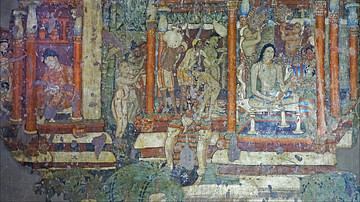
Image
Murals of Ajanta Cave
Some of the finest works of art were created in the Ajanta Caves (Maharashtra, India) between 2nd century BCE and 6th century CE. The walls of the cave are covered with murals like this. Apart from distinctive forms, clear lines and vivid...
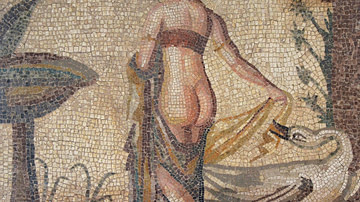
Image
Leda and the Swan
Mosaic depicting Leda and the Swan, once the central panel (emblema) of a mosaic floor discovered in the vicinity of the Sanctuary of Aphrodite at Palaipafos in Cyprus. Late 2nd - early 3rd century CE. (Palaepaphos Museum, Cyprus)

Image
Diaspora Synagogues (1st - 2nd centuries CE)
A map of Diaspora synagogues around the 1st - 2nd centuries CE showcasing the geographical spread of Jewish communities outside the ancient Israelite homeland. The map highlights notable synagogues of that era, illustrating the extent of...
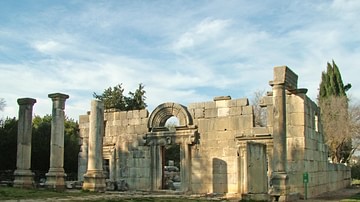
Image
Kfar Bar'am Synagogue
The ruins of the 3rd century CE synagogue at Kfar Bar'am, northern Israel.

Image
Euclid of Alexandria
An illustration of Euclid of Alexandria, the 4th century BCE mathematician.
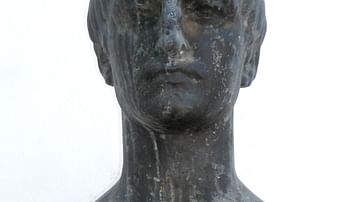
Image
Bust of Marcus Annaeus Lucanus
Bust of the Roman poet Marcus Annaeus Lucanus (CE 39-65). Grandson of Seneca the Elder and nephew of Seneca the Younger, was a Roman statesman and Latin poet. The sculpture can be found in his birthplace, Corduba (modern day Córdoba, Spain...
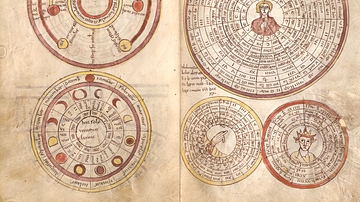
Image
Depiction of Metonic cycle
Depiction of the 19 years of the Metonic cycle as a wheel, with the Julian date of the Easter New Moon, from a 9th-century computistic manuscript made in St. Emmeram's Abbey.